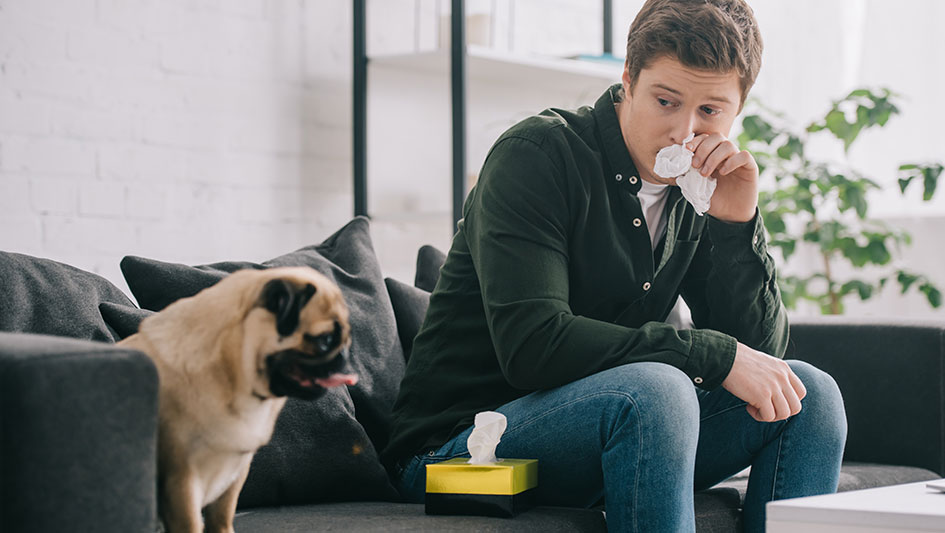
If you have a newly constructed home in Greensburg, it was probably constructed with energy efficiency as a priority. This means more insulation and windows and doors with enhanced seals. While these enhancements are great for keeping your heating and cooling bills reasonable, they’re not so good for your indoor air quality.
Your HVAC system needs to work with a filter. But if you have a flat filter, you won’t be getting adequate filtration. This style only gives the lowest level of protection by keeping dust out of your HVAC system.
While you can get a pleated filter or one with a higher MERV rating, it still might not be adequate filtration, particularly if someone in your residence has allergies or other respiratory troubles.
That’s where a whole-house air purifier comes in. These systems are attached within ductwork to provide powerful filtration across your home. Depending on the model you select, you’ll be able to get rid of allergens, odors and even some viruses under certain airflow conditions.
Here are our favorite options from Lennox, an industry leader in air purification.
Best Air Purifiers from Lennox
1. HEPA Air Purifiers
A HEPA air purifier, like the Healthy Climate® High-Efficiency Particulate Air Filtration System, delivers the best filtration. These filters were first developed to guard scientists as they worked on the atomic bomb. Today, they’re a must-have in hospitals and other medical facilities.
The Healthy Climate HEPA Filtration System includes a three-step filtration procedure. A prefilter catches larger pollutants before the HEPA filter catches remaining tiny irritants. Then, a charcoal filter wipes out odors and chemical vapors.
The PureAir™ S Air Purification System works with all HVAC brands and easily integrates with your smart home. It reduces the three major types of indoor air pollutants:
- Airborne particles
- Chemical odors and vapors
- Germs and bacteria, under certain airflow conditions
This air purifier can eliminate 99.9%* of pollutants, such as mold spores, pollen, dust and pet dander. It’s also potent at reducing or eradicating 90%1 of flu and cold viruses under certain airflow conditions. And, based on laboratory and field studies, it decreases and eradicates approximately 50% of your home’s odors and chemical vapors within 24 hours.
The PureAir S comes with sensing features that make it simple to service. When used with an iComfort® S30 smart thermostat, you’ll receive an alert to change the filter and UVA light.2 This home air purifier must be linked with communicating Lennox systems and the iComfort S30.
2. Media Air Cleaners
Lennox Healthy Climate® Media Air Cleaners are made in a variety of MERV ratings to match your needs. This rating calculates how good filters are at capturing contaminants. The greater the number, the finer the filtration.
The Healthy Climate Carbon Clean 16® Media Air Cleaner is great for households with allergy suffers and pets. This is a HEPA filter air purifier, as it has a MERV 16 rating for hospital-strength filtration. And it removes more than 95%3 of aggravating particles from your home’s air.
The Healthy Climate 13 Media Air Cleaner is great for homes who want enhanced protection from viruses and bacteria. This filter removes 99% of larger particles including dust, pollen and lint. And up to 54% of smaller particles down to 0.3 microns.4
The Healthy Climate 11 Media Air Cleaner is a an excellent air purifier for allergies and in houses with pets. It eliminates more than 87% of bigger particles down to 3 microns and more than 28% of smaller ones down to 0.3 microns.4 It’s able to offer this effective filtration without running up the bill for turning on your heating and cooling system.
These three media air cleaners are compatible with any brand of HVAC system. But despite that, it’s essential to know that some of the more substantial ones, like MERV 16 and 13, may limit your system’s airflow. This can hike up your heating and cooling costs.
3. UV Air Purifiers
The sun’s UV rays are the reason why you get a painful sunburn. But this kind of light has a useful application when concealed inside your ductwork. It’s also powerful enough to decrease germs, mold and fungi under certain airflow conditions.
In fact, the Healthy Climate UV Germicidal Light can lower the concentration of airborne microorganisms by 50% in as fast as 45 minutes.5 This light destroys cell structure, which stops these microorganisms from flourishing and moving around your home.
And this UV air purifier can also help keep your HVAC system clean and operating properly. It wipes out of germs, mold and fungi lurking within ductwork and your system itself. This UV light air purifier achieves all these things without developing lung-aggravating ozone.6
Breathe Better with the Support of Our Air Purification Professionals
Your household’s comfort and health is important to us at Wallpe Heating & Cooling. We know there are lots of possibilities out there. That’s why we make it simple to partner with our indoor air quality professionals. We specialize in developing solutions that match your needs and budget, and we’d love to hear more about your house and your air quality issues. Give us a call at 812-663-7252 right away to get started.
1Based on laboratory and field studies.
2PureAir™ S requires the iComfort® S30 and a communicating indoor unit.
3Leading consumer magazine, January 2012. Based on the published CADR, which is the standardized measurement system to determine the cubic feet of clean air produced per minute. Particles captured range in size down to 0.3 micron. One micron = 1/25,000 of an inch in diameter.
4Based on lab tests conducted on filters with conditions included in ASHRAE standard 52.2 for E1 and E3 size ranges.
5Based on constant circulation of air in the home, 3,000-square-foot home with a 5-ton air handler.
6U.S. Environmental Protection Agency, “Ozone Generators that are Sold as Air Cleaners: An Assessment of Effective and Health Consequences,” August 2006.
